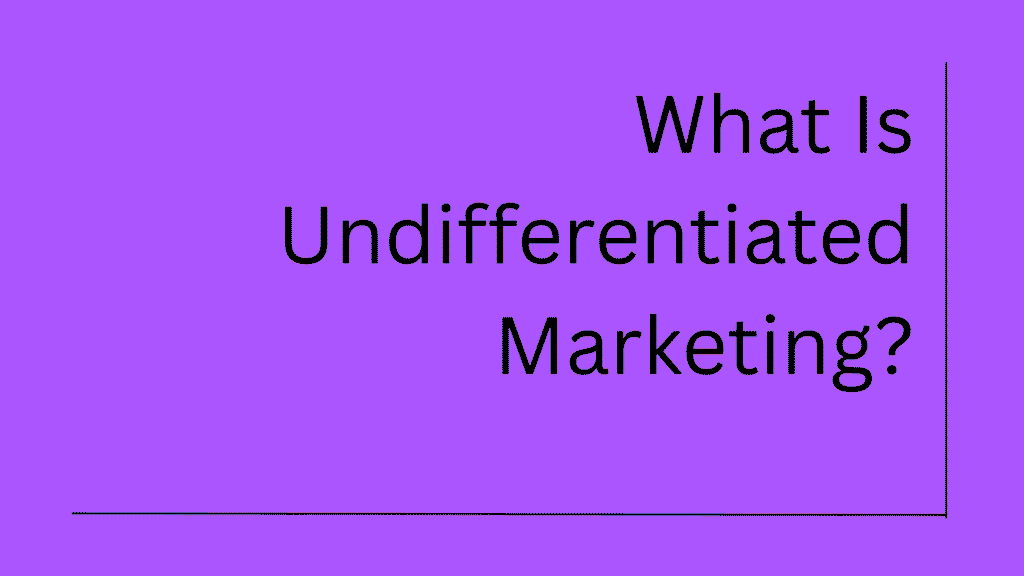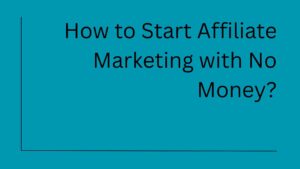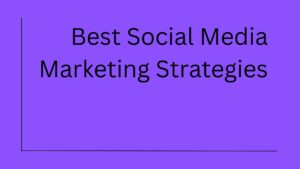Marketing to everyone sounds like it should be either impossible or ineffective, right? Yet some of the world’s biggest brands do exactly that, and it works incredibly well for them.
This approach is called undifferentiated marketing, and understanding when and how to use it can make a huge difference in your marketing strategy.
Most marketing advice tells you to narrow your focus, identify your niche, and target specific customer segments. That’s solid advice for many businesses. But mass marketing takes the opposite approach, casting the widest possible net and appealing to the broadest audience.
Before you dismiss this as outdated mass marketing, consider that some of the most successful products in the world still use this strategy effectively. There’s a reason why, and understanding undifferentiated marketing might change how you think about your own marketing.
What Exactly Is Undifferentiated Marketing?
Undifferentiated marketing means creating one marketing message and campaign that targets the entire market rather than specific segments within it.
You’re not customizing your message for different age groups, income levels, or lifestyle preferences. You’re creating something designed to appeal to pretty much everyone who might use your product.
This approach assumes that your product has universal appeal and that the differences between customer segments aren’t significant enough to warrant separate marketing campaigns. You develop one product, one message, and one strategy for everyone.
It might sound simple, but executing undifferentiated (mass) marketing effectively is actually quite challenging. Your message needs to resonate broadly without being so generic that it connects with no one.
Classic Examples of Undifferentiated Marketing
Some brands have built empires using undifferentiated marketing strategies. Let’s look at what they did right.
Coca-Cola
Perhaps the most iconic example of undifferentiated marketing is Coca-Cola. For decades, the company sold the same product in the same bottle through the same distribution channels with remarkably consistent advertising.
The genius of Coca-Cola’s approach is that its marketing focuses on universal themes of happiness, togetherness, and celebration that transcend demographic boundaries. A teenager and a retiree can both connect with these messages.
They don’t create separate campaigns for different age groups or income levels. The product and message remain consistent whether you’re in New York or Tokyo, whether you’re 15 or 50.
M&M’s
Those colorful button-shaped chocolates appeal to basically everyone. Kids love them. Adults love them. The marketing doesn’t target specific groups; it just emphasizes fun, humor, and the product itself.
M&M’s advertising features the anthropomorphic candy characters in various humorous situations. These ads work across age groups and demographics because humor and entertainment have broad appeal.
The product itself hasn’t changed fundamentally in decades. Same chocolates, same colorful shells, same universal appeal.
Toothpaste Brands
Think about basic toothpaste marketing. Everyone brushes their teeth, or at least, everyone should. Many toothpaste brands use mass marketing because their product serves a universal need.
Sure, some brands have introduced specialized variants for whitening, sensitivity, or other specific concerns. But the core product marketing often takes an undifferentiated approach because oral hygiene is something everyone needs regardless of age, income, or lifestyle.
A brand might emphasize clean teeth, fresh breath, and confidence, universal benefits that appeal to pretty much everyone.
Salt and Basic Staples
Ever notice how salt is marketed? Most brands don’t segment their salt marketing by demographics. Salt is salt. Everyone uses it for cooking and seasoning.
This applies to many basic staples and commodities. When your product is a universal necessity with little variation, undifferentiated marketing often makes the most sense.
When Does The Mass Marketing Work Best?
Not every product or business should use undifferentiated marketing. This approach works best under specific conditions.
Products with Universal Appeal
If your product solves a problem or fulfills a need that virtually everyone has, undifferentiated marketing might work. Basic food items, certain household products, and everyday necessities fall into this category.
The key question is whether meaningful differences exist between customer segments that would warrant different marketing approaches. If everyone uses your product the same way for the same reasons, segmentation might not add much value.
Large, Established Brands
Mass marketing often works better for brands that already have significant market presence and recognition. When you’re Coca-Cola, you can afford to cast a wide net because your brand awareness is already massive.
Smaller or newer brands usually benefit more from targeted marketing that helps them carve out a specific niche and build a loyal following before expanding their reach.
Cost-Sensitive Situations
Creating multiple campaigns for different market segments costs more than creating one campaign for everyone. If you have limited marketing resources, undifferentiated marketing can be more cost-effective.
You produce one set of ads, one message, and one creative execution instead of multiple versions customized for different audiences.
Markets with Minimal Segmentation
In some markets, customer segments don’t differ much in their needs, preferences, or behaviors. When demographic or psychographic differences don’t significantly impact how people use or value your product, undifferentiated marketing can be quite effective.
Advantages of Undifferentiated Marketing
Why would a business choose to market to everyone instead of targeting specific segments? There are some legitimate benefits.
Lower Marketing Costs
Creating one campaign costs less than creating multiple campaigns. You don’t need different creative executions, separate media buys, or customized messaging for various segments.
This efficiency can be particularly valuable for small businesses or products with thin profit margins.
Simplified Strategy
Managing one marketing approach is simpler than juggling multiple segment-specific campaigns. Your team doesn’t need to coordinate different messages or worry about consistency across various target audiences.
This simplicity can help maintain brand consistency and reduce the complexity of marketing operations.
Maximum Reach
Undifferentiated marketing allows you to reach the broadest possible audience. You’re not limiting your potential customer base by focusing too narrowly on specific segments.
For products with truly universal appeal, this maximizes your market opportunity.
Strong Brand Building
A single, consistent message repeated widely can build powerful brand recognition. When everyone sees the same marketing, your brand identity becomes clearer and more memorable.
Think about how instantly recognizable Coca-Cola’s branding is across the world. That consistency comes partly from their undifferentiated approach.
Disadvantages of Undifferentiated Marketing
Mass marketing isn’t without its drawbacks. You need to understand the potential downsides before committing to this approach.
Lack of Personalization
Modern consumers increasingly expect personalized experiences and messages that speak directly to their specific needs and preferences. Undifferentiated marketing can feel generic and fail to create strong connections with any particular group.
When your message tries to appeal to everyone, it might not resonate strongly with anyone.
Missing Niche Opportunities
By targeting the entire market, you might overlook valuable niche segments that would respond particularly well to customized marketing. These segments might be willing to pay premium prices for products that specifically address their needs.
Competitors using differentiated marketing can capture these niches while you’re focused on the mass market.
Increased Competition
When you target everyone, you’re competing with everyone else targeting the mass market. This can make it harder to differentiate your offering and might lead to price competition.
Niche players can often command higher margins because they face less direct competition.
Lower Customer Loyalty
Generic marketing tends to build lower customer loyalty than personalized approaches. When customers don’t feel like a brand understands their specific needs, they’re more likely to switch to competitors.
Undifferentiated marketing can make your customers feel like just another number rather than valued individuals.
Undifferentiated vs. Differentiated Marketing
Understanding the difference between these approaches helps clarify when each makes sense.
Differentiated marketing involves creating separate campaigns for different market segments. You might have one message for young professionals, another for families, and another for retirees.
This approach recognizes that different groups have different needs, preferences, and responses to marketing messages. It allows for personalization and targeted value propositions.
Undifferentiated marketing treats the market as one homogeneous group. Everyone gets the same message regardless of their individual characteristics or preferences.
Neither approach is inherently better. The right choice depends on your product, market, resources, and competitive situation.
Many successful brands use a hybrid approach, maintaining a consistent core brand message while creating some segment-specific campaigns around the edges.
Modern Challenges for Undifferentiated Marketing
The marketing landscape has changed significantly, making undifferentiated marketing harder to execute effectively.
Digital Personalization Expectations
Consumers now expect personalized experiences online. They’re used to seeing ads tailored to their browsing history, receiving product recommendations based on past purchases, and getting content customized to their interests.
In this environment, generic messaging can feel outdated and disconnected.
Data-Driven Targeting Capabilities
Modern marketing tools make it easier and more cost-effective than ever to segment audiences and deliver targeted messages. The cost advantage of mass marketing has diminished.
When you can efficiently reach specific segments with personalized messages, the efficiency argument for undifferentiated marketing becomes less compelling.
Fragmented Media Landscape
The days when everyone watched the same TV shows and read the same newspapers are gone. Media consumption is now highly fragmented across countless channels and platforms.
Reaching a truly mass audience is more difficult and expensive than it used to be, making undifferentiated marketing less practical for many businesses.
Is Mass Marketing Right for Your Business?
Before adopting an undifferentiated marketing approach, ask yourself some critical questions.
Does your product have genuinely universal appeal, or are there meaningful differences in how various customer segments would use or value it?
Do you have the brand recognition and market presence to make a mass marketing approach effective, or would you benefit more from building a strong position in a specific niche first?
Can you create a message that resonates broadly without being so generic that it fails to connect with anyone?
Are your competitors using differentiated approaches that might give them advantages in specific segments you’re ignoring?
Conclusion
For most small to medium-sized businesses, differentiated or niche marketing typically delivers better results. The ability to create personalized connections and serve specific customer needs often outweighs the cost savings of undifferentiated marketing.
But if you’re selling a true commodity or universal staple, or if you’ve already built massive brand awareness, mass marketing might still be your best approach.
The key is matching your marketing strategy to your specific situation rather than blindly following trends or conventional wisdom. Understand your market, know your customers, and choose the approach that gives you the best chance of success.
FAQs About Undifferentiated Marketing
While undifferentiated marketing is often associated with large, established brands, small businesses can still use it effectively under the right conditions. If your product meets a universal need (like basic household items or everyday food staples) and you’re operating in a local or smaller market, a broad approach can simplify your messaging and keep costs low. However, most startups benefit from focusing on a defined niche first, then expanding to broader audiences once they’ve built brand recognition.
The key is to focus on emotional or human-centered values that cut across demographics, things like happiness, trust, connection, or comfort. Avoid jargon, overly specific details, or narrow cultural references. Coca-Cola’s focus on “sharing joy” or M&M’s humor-driven storytelling are great examples. Use clear, relatable language and visuals that emphasize shared experiences rather than personal differences.
Products that cater to distinct customer needs, preferences, or lifestyles rarely succeed with a one-size-fits-all strategy. For example, luxury items, specialized technology, or B2B solutions usually require segmented campaigns because their value propositions vary by audience. In such cases, trying to market to everyone dilutes your message and reduces conversion potential.
Undifferentiated marketing thrived in the age of mass media TV, radio, and print when reaching large audiences was easier and cheaper. However, personalization dominates. Algorithms on platforms like Google and Meta prioritize targeted ads, which means mass messages often perform less efficiently online. Still, undifferentiated campaigns can work on digital platforms when the message has a broad, emotional appeal or when building global brand consistency is the goal.
If you notice declining engagement rates, low brand loyalty, or minimal differentiation from competitors, those are red flags. A flat response to your campaigns can signal that your message is too broad or failing to connect emotionally. Another sign is stagnant conversion rates despite a wide reach, indicating that people are seeing your ads but not feeling personally compelled to act.
Absolutely. Many brands evolve from mass marketing to more segmented strategies as they grow and gather customer data. For instance, a company might start with a universal message to build awareness, then introduce tailored campaigns once it understands different customer segments better. This transition often helps brands stay relevant as markets mature and consumer expectations for personalization increase.






2 thoughts on “What Is Undifferentiated Marketing? Definition and Real Examples”
Hi, I like your writing so much. Share, and we will be in contact more. Approximately your article on the undifferentiated one, I mean, the mass marketing. I need a specialist in this area to resolve my problem. Maybe that is you. Looking forward to seeing you.
Sylvia here, I have not seen many naturally sounding articles on the internet since the inception of various GPTs, but you brought the trust back to my pockets; keep posting. Be there online to inspire many by sharing marketing knowledge.